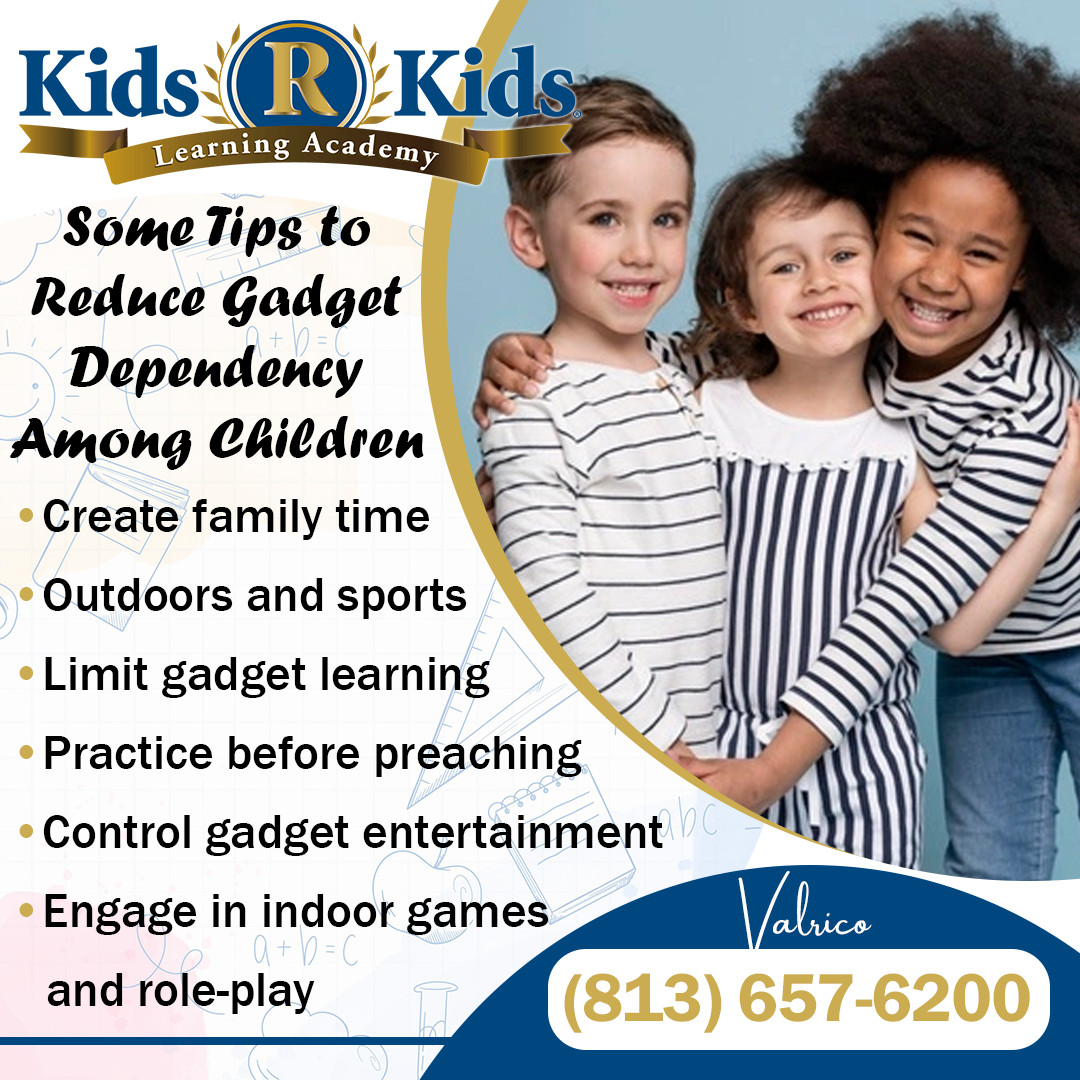Ways to avoid gadget dependency in preschoolers
In a world of innovative technology, it is impossible to remain unaffected or unattached to gadgets. These gadgets have become an inherent part of children’s lives. However, the impact of too much screen time is drastic on the development of children, and therefore Kids ‘R’ Kids, an educational preschool, shares below some of the alternative activities that can help move away from gadgets and develop better habits.
Gadgets and dopamine
As per research, the dependency on gadgets is caused by the overproduction of dopamine in the brain. Dopamine is a neurotransmitter that is released during ‘pleasurable’ or ‘rewarding’ experiences and tells the brain to ask for more stimulus. As children receive dopamine by engaging in unhealthy practices such as gadget use, again and again, the dopamine receptors tend to shut down or become less receptive. This downregulation of dopamine creates a need for higher stimulus in children. In short, children need more of the gadget to satisfy the brain’s heightened need for dopamine.
Here are some tips to reduce gadget dependency among children:
-
Outdoors and sports
With the advent of technology, outdoor activities have taken a backseat. Although preschools encourage children to engage in outdoor activities, there is a lot of time children spend at home. It is an effort but taking the kids out to the park and promoting a love for sports and the outdoors will go a long way in disengaging them from gadgets and maintaining a healthy lifestyle.
-
Practice before preaching
Before adults can preach to children about the disadvantages of gadget overuse, they must become role models themselves. With the dopamine reward factor playing havoc on adult minds, setting an example can become difficult. Practice setting aside gadgets for a few hours daily and engaging with kids in other activities such as reading, playing, or learning something new. Children learn by imitation and so an adult who has healthy gadget habits will impart the same lesson to the kids.
-
Limit gadget learning
Technology has helped expedite and ease the learning process by offering videos and audio easily. However, most children tend to find it difficult to read and write because they are exposed to video learning from an early age. Educational videos online can be streamed to bigger screens so the focus is learning and not the device. Striking a balance between gadget learning and conventional learning is very crucial.
-
Control gadget entertainment
Children below 18 months of age must not be introduced to gadgets ideally as the gadget’s rays can be detrimental to their eye health. Children between 2-5 years old can be allowed one hour of screen time. But rules must be imposed. Children must be given the option to choose when they want to play and when they want to use a gadget. A mutual agreement would be the best course of action.
-
Engage in indoor games and role-play
Children need a lot of engagement in general and will eventually gravitate towards a gadget when they find themselves bored. Boredom isn’t such a bad thing as it creates an opportunity for children to be creative and indulge in unstructured play. Role-play is one such activity that allows children to learn as well as express their understanding of the world as they see it. Indoor games or activities such as learning a musical instrument are other brilliant ways to keep them occupied without being dependent on technology.
-
Create family time
Free time can be transformed into family time that includes adventures, fun, and learning together. Going biking, starting a new sport, spending time in nature, visiting a museum, building sandcastles, or just talking about the day or story-telling can be some of the fulfilling ways to spend time together. This not only takes away the need for any stimulation from gadgets but also helps the family bond and learn interesting ways to spend time.
Why Kids ‘R’ Kids?
The philosophy of “Hug First, Then Teach”, defines every aspect of what Kids ‘R’ Kids, Valrico stands for. Unlike many daycare centers or childcare providers, its methodology is a whole-child approach. It constantly strives to strengthen and encourage every child’s emotional, intellectual, social, and physical well-being through the expertise of its childcare providers and a unique partnership with parents.
























